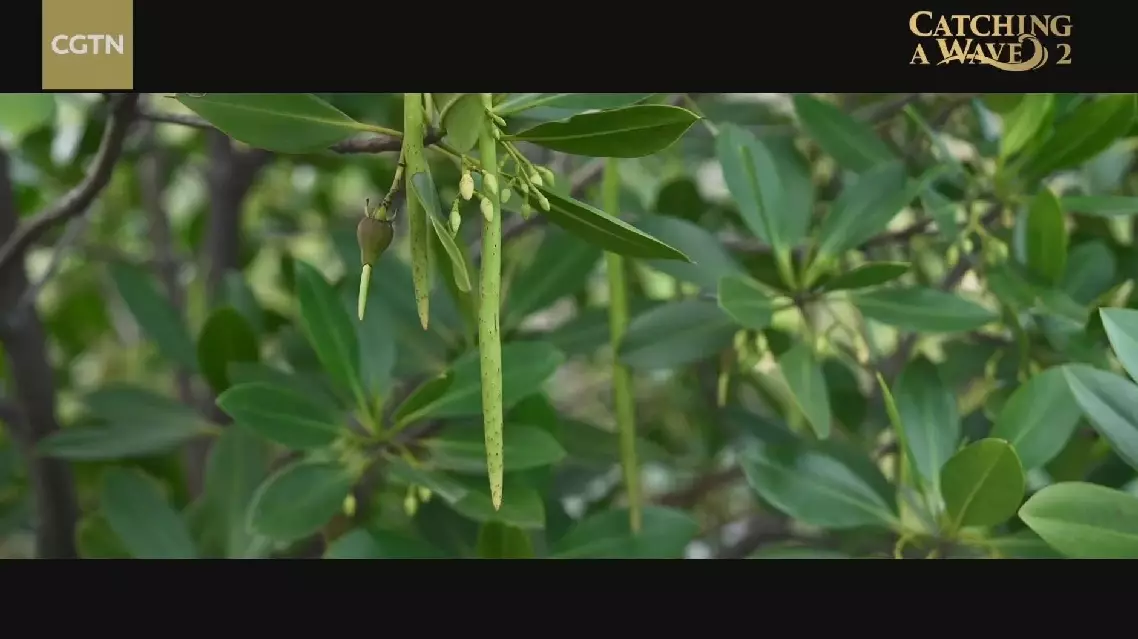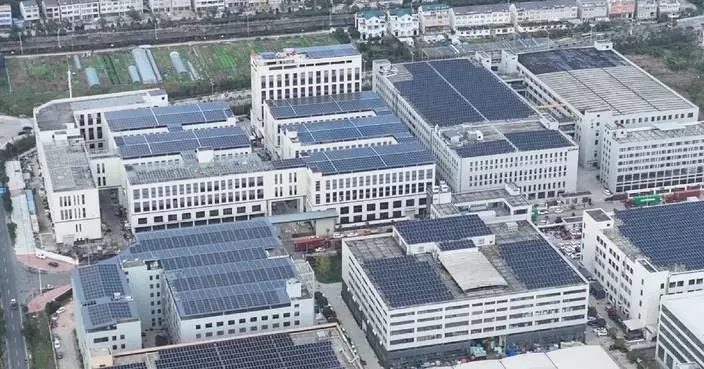A new episode of "Catching A Wave 2," a China Global Television Network (CGTN) documentary series, showcases China and Indonesia's partnership in restoring coastal ecosystems, transforming degraded shores into thriving mangrove habitats, and emphasizing the vital role mangroves play in protecting coastlines and supporting biodiversity.
Released on March 28, the series examines China's role in enhancing stability and prosperity in the South China Sea, covering topics such as undersea cable networks, maritime safety, and eco-protection initiatives like mangrove restoration.
The third episode, "Guardians of the Coast," focuses on a successful mangrove restoration project in Banten, Indonesia, led by China's CHN Energy and Indonesia's National Electricity Company.
The initiative has transformed barren coastal land into a thriving ecosystem, providing natural protection against erosion and creating a sanctuary for wildlife. The restored mangrove areas now support species such as herons, marking a significant environmental achievement.
In the episode, Lu Chenjun, general manager of PT Shenhua Guohua Powerplant Jawa Bali, discussed how the project blends local and international techniques, combining traditional planting methods with advanced monitoring technologies like drones.
Paundra Hanutama, founder of the Indonesia Mangrove Conservation Foundation, highlighted the growing recognition of mangrove protection. He stressed that corporate involvement is essential, particularly in Indonesia, home to nearly a quarter of the world's mangroves, noting a slight increase in mangrove coverage.
Professor Cong Bailin of China's First Institute of Oceanography emphasized the importance of scientific collaboration. His team's rapid propagation techniques are helping restore mangrove ecosystems more efficiently, offering valuable insights for projects like Indonesia's.
Doddy Nafiudin, general affairs director of PT Shenhua Guohua Powerplant Jawa Bali, underscored the need for collaboration between local communities, corporations, and governments to ensure the success of environmental conservation. He believes collective efforts are key to achieving long-term sustainability.
This joint project between China and Indonesia demonstrates the power of international collaboration in addressing environmental challenges and highlights the role of technology and corporate responsibility in conservation efforts, noted industry insiders of both countries.

CGTN documentary highlights China-Indonesia collaboration on mangrove restoration



















































